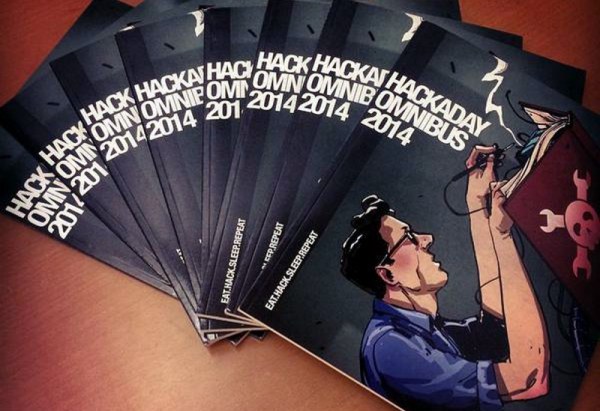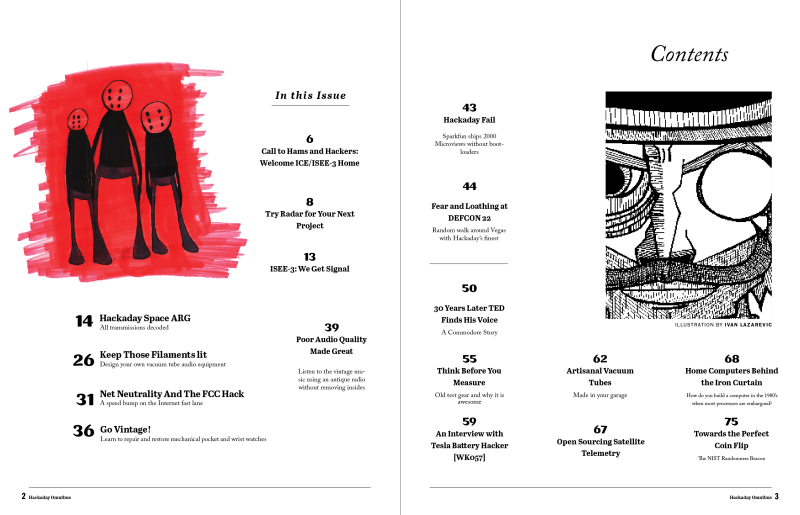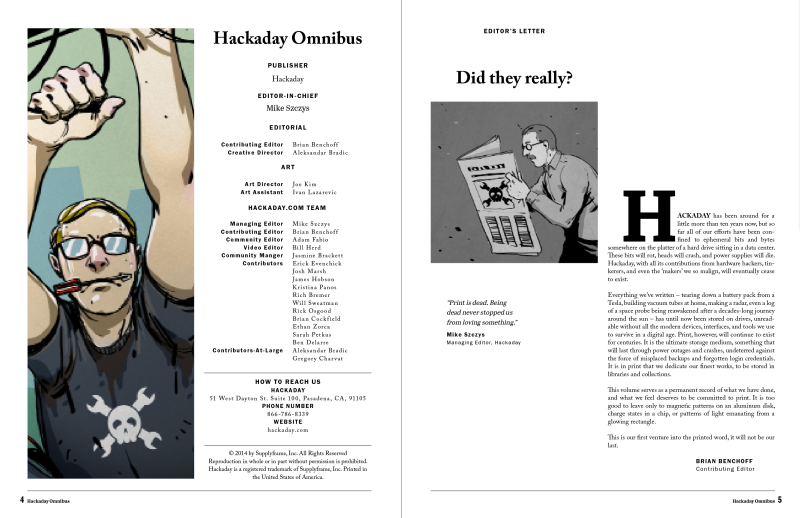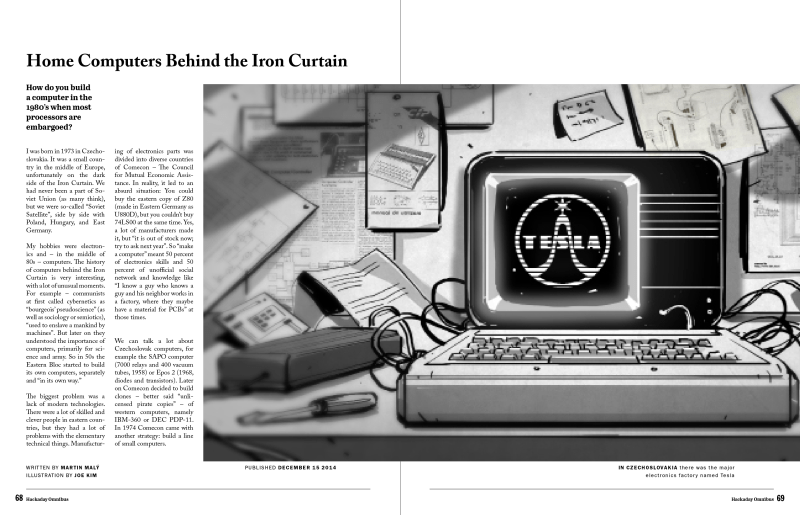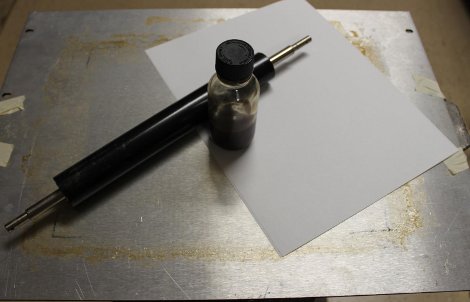Here’s your chance to grab a tangible piece of Hackaday. This morning we are starting pre-orders for the Hackaday Omnibus 2014. This is our first-ever print edition. It collects some of the best original content published on Hackaday in 2014.
We’re proud of what the Hackaday crew accomplished last year. From stories of old and new to articles that encouraged you to stretch your hacking universe, we are thrilled with the original content articles we saw published last year. To go along with this top-tier content, we added amazing art and illustrations from [Joe Kim]. The product is something that demands commemoration in print and thus the Omnibus was born.
This full-color, 80 page, perfect binding volume is just what your coffee table has been crying out for. Of course it will look spectacular covered in solder and clipped resistor leads on the bench. And if your company is serious about hardware you need to send that message with a copy of the Omnibus in the reception area (or comically in the commode).
We are pricing the Hackaday Omnibus 2014 at $15 but we will sweeten the deal if you get in on the preorder. Use this coupon code to get $5 off: OMNIBUS2014. The coupon will work for the first 500 copies pre-ordered with an estimated shipping date of 2/9/15.

